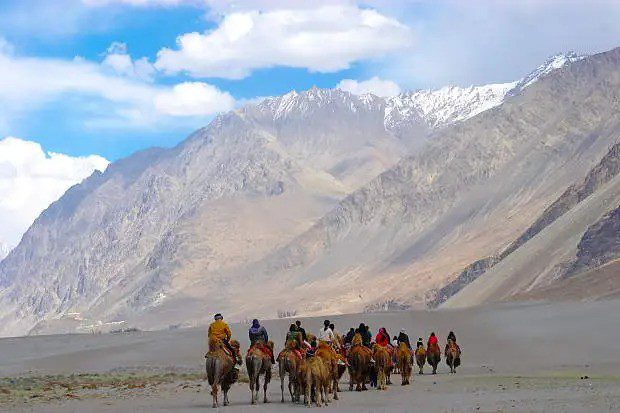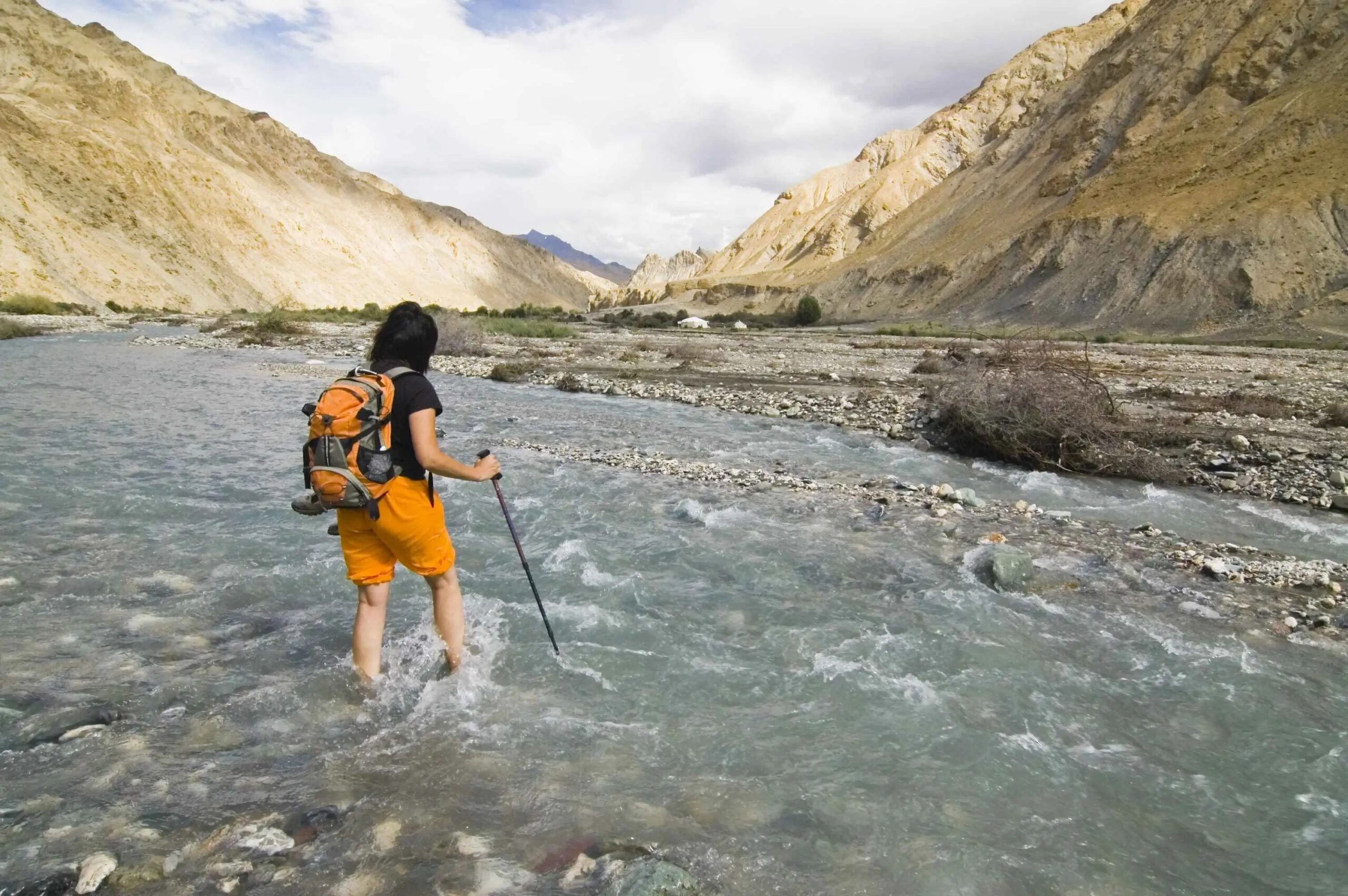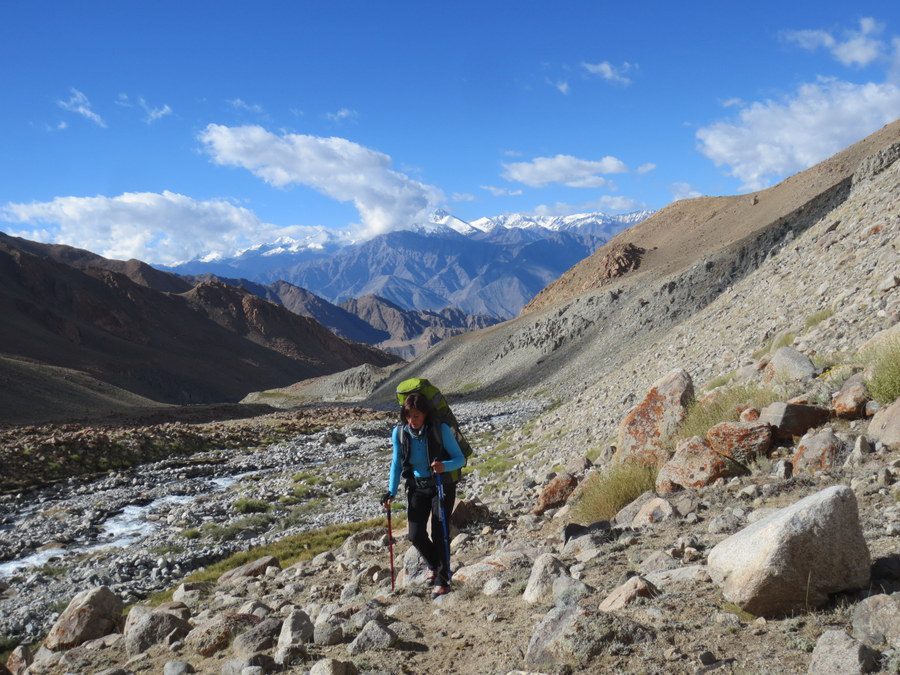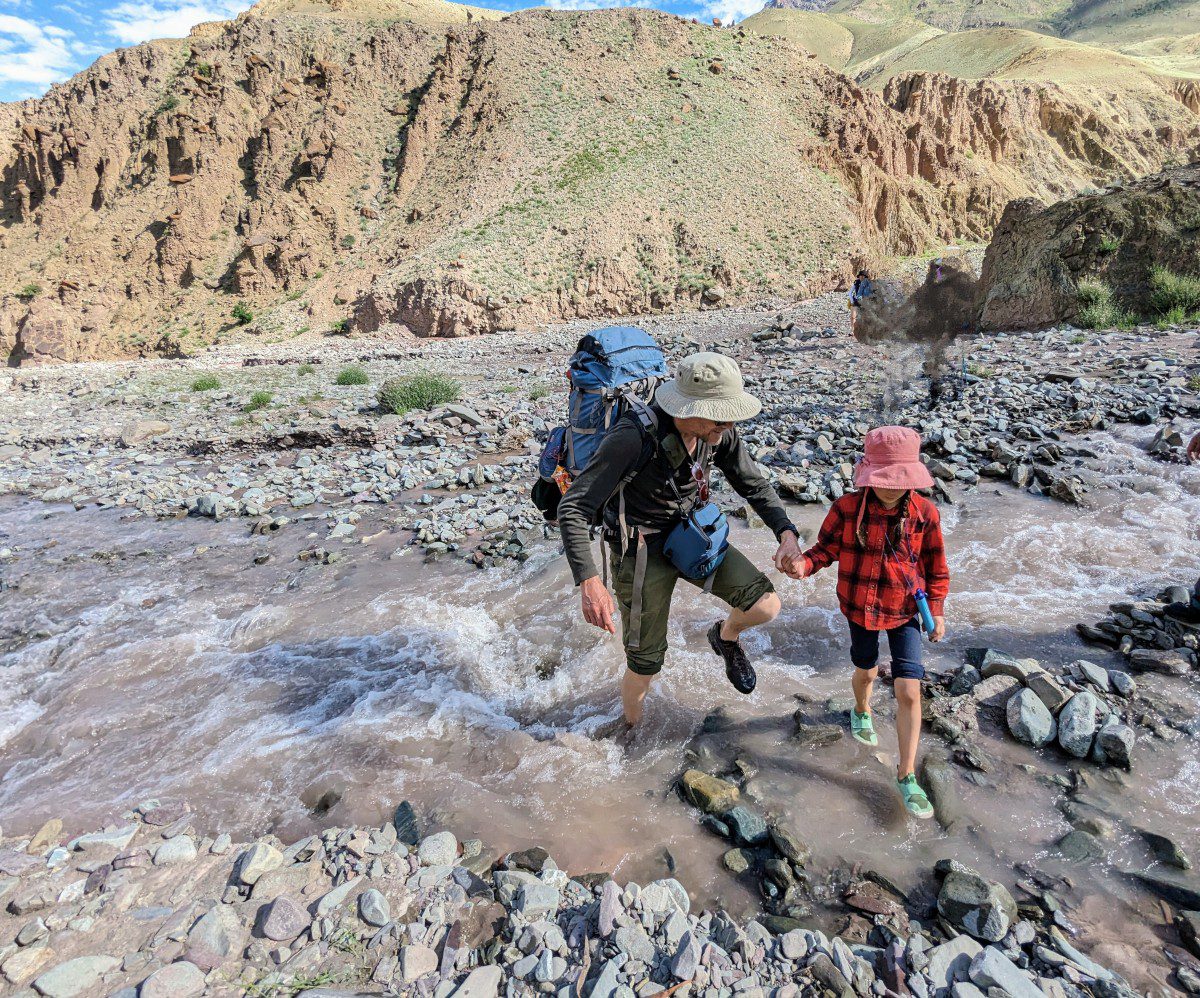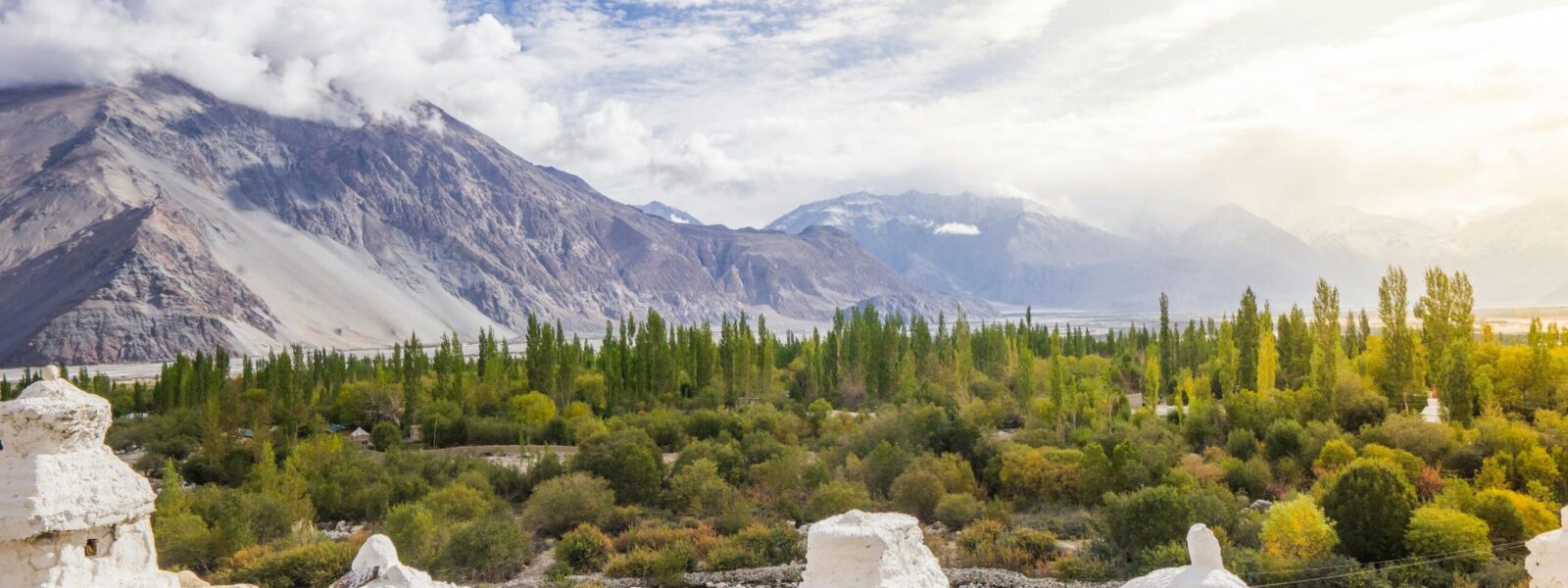Ladakh is more than just a trekking destination; it’s a realm where nature’s raw elements—fire, water, earth, and air—shape the landscape and fuel an unforgettable journey. This breathtaking high-altitude desert, located in the Himalayas, attracts adventurers seeking to experience its unique blend of arid deserts, glacial rivers, towering mountain passes, and crystal-clear skies. In this guide, we’ll explore the treks that best showcase Ladakh’s elemental beauty and offer tips for planning a memorable adventure in this remote region.
Introduction to Ladakh’s Elemental Landscape Treks
Ladakh, often called “The Land of High Passes,” is a haven for trekkers seeking an escape into pristine, untouched landscapes. Here, you can experience a true connection with nature as you trek between varied terrains that represent the core elements: fire, water, earth, and air. From the deserts of Nubra Valley to the icy stretches of the Chadar Trek, Ladakh offers something for every nature lover and adventure seeker.
“Ladakh took my breath away, literally and figuratively. I’ve never seen landscapes that feel like they belong to another planet!”
Amanda Leclerc, Teacher, Canada
Why Ladakh’s Landscape is Unique
Ladakh’s geographical and climatic extremes make it unique. At altitudes ranging from 9,000 to over 18,000 feet, Ladakh’s environment is both challenging and rewarding. The area’s geological diversity, shaped by the collision of the Indian and Eurasian tectonic plates, results in rocky mountain passes, shimmering lakes, and high-altitude desert landscapes. Add to that a thin, crisp atmosphere and diverse microclimates, and you get a landscape that represents every element in vivid detail.
“Nothing prepared me for Ladakh’s beauty. It’s a landscape where every element is magnified—each step feels like stepping into a different world.”
Rajeev Sharma, Photographer, India

The Elemental Theme of Ladakh’s Landscapes
Fire: Trekking Amidst Ladakh’s Desert Heat and Sand Dunes
In Ladakh, the element of “fire” is represented in its desert-like landscapes and the sunlit, rocky terrain. The Nubra Valley is where trekkers encounter the sand dunes of Hunder, framed by towering mountains. These sunlit dunes, resembling a high-altitude desert, feel like a landscape from another planet. The intense sunlight and arid environment test even seasoned trekkers, reminding them of the element’s power.
“The Nubra Valley Trek was something else—the dunes and dry heat made me feel like I was in a high-altitude Sahara. Truly a trek that challenges and rewards you.”
James O’Connor, Engineer, United Kingdom
Water: Ladakh’s High-Altitude Lakes and Glacial Rivers
The element of “water” comes alive through Ladakh’s high-altitude lakes and rivers, particularly Pangong Lake and Tso Moriri. Pangong Lake, with its ever-changing hues of blue, sits at 14,270 feet above sea level and offers an ethereal experience for trekkers. Similarly, the Indus and Zanskar Rivers bring life to Ladakh’s arid landscapes, flowing from glaciers in the mountains and providing a contrast to the desert-like terrain.
“Seeing Pangong Lake was like witnessing magic. Its colors changed every few hours. Walking along its shores, I felt connected to something ancient and pure.”
Mila Johansson, Environmental Scientist, Sweden
Earth: Mountain Passes and Rocky Terrains
Mountain passes and rocky trails dominate Ladakh’s landscape, representing the element of “earth.” High passes like Khardung La and Chang La are among the most notable in the world, taking trekkers on rugged paths that cut through Ladakh’s mountain ranges. The rocky terrains and ancient trails that cross the Ladakhi mountains are deeply grounded, symbolizing the solidity of earth itself.
“I could feel the weight of the mountains around me. Each pass felt like an accomplishment—earth in its rawest, most beautiful form.”
Julia Rios, Artist, Spain
Air: Crisp, Pure Atmosphere and Spiritual Energy
At such high altitudes, Ladakh’s air is thin, pure, and full of a spiritual essence that many find grounding and meditative. The clear skies, deep silence, and clean air provide a rare clarity that enhances the trekking experience. Trekkers often describe a spiritual calm as they journey through Ladakh’s landscapes, particularly in places like Hemis Monastery, where the thin air heightens their awareness.
“Breathing the air in Ladakh feels like it cleanses your soul. The thin atmosphere and endless skies make it a place where you can breathe deeply and just be.”
Tomas Fischer, Travel Writer, Germany

Top Treks in Ladakh for Elemental Exploration
| Trek |
Element Highlighted |
Description |
| Chadar Trek |
Water |
A unique trek on the frozen Zanskar River, showcasing Ladakh’s “water” element in a winter wonderland. |
| Markha Valley Trek |
Earth, Water, Fire |
Crosses rocky trails, river valleys, and arid landforms, giving trekkers a taste of Ladakh’s varied terrains. |
| Nubra Valley Trek |
Fire, Earth |
Takes trekkers through sand dunes and desert mountains, embodying Ladakh’s intense “fire” element. |
Essential Preparation for Trekking in Ladakh’s Diverse Landscapes
Acclimatization Tips for High-Altitude Treks
Acclimatizing to Ladakh’s high altitudes is essential to avoid altitude sickness. Start with shorter treks before tackling high passes like Khardung La. Take time to rest, stay hydrated, and be mindful of symptoms like headaches or dizziness.
“I can’t stress enough the importance of acclimatization. I took an extra day at Leh, and it made all the difference when trekking through Nubra Valley.”
Sara Martínez, Data Analyst, Spain
Packing Essentials for Extreme Climates
Packing for a trek in Ladakh requires preparation for both hot days and freezing nights. Essentials include high-SPF sunscreen, insulated jackets, sturdy boots, hydration packs, and trekking poles for stability on rocky trails. Sunglasses and gloves are also a must for desert and mountain regions.
“From sunscreen to warm gloves, you need to be prepared for all weather. I packed my bags carefully and still wished I’d brought an extra layer!”
David Nguyen, Financial Consultant, United States
Responsible Trekking Practices for Sustainable Tourism
Ladakh’s fragile ecosystem calls for sustainable trekking practices. Opt for reusable water bottles, avoid single-use plastics, and respect local customs by dressing modestly and following guidelines for cultural sites.
“Sustainable trekking isn’t just a choice; it’s a responsibility. Ladakh is too beautiful to be taken for granted.”
Isabel Thompson, Environmentalist, Australia

Experiencing Ladakh’s Culture and Spiritual Heritage on Treks
Monasteries and Spiritual Sites Along Trekking Routes
Ladakh’s Buddhist heritage is visible in the many monasteries dotting the landscape. Trekkers often visit Hemis Monastery and Thiksey Monastery along their routes. These sites offer a sense of calm and connection, adding a spiritual dimension to the trekking experience.
“Stopping at monasteries on my trek made me feel a deeper connection to Ladakh’s history and its peaceful energy.”
Liam Murphy, Teacher, Ireland
Homestays and Interactions with Local Communities
For an authentic cultural experience, consider staying at local homestays. You’ll learn about Ladakhi culture firsthand and experience traditional food and hospitality, fostering a connection with the land and its people.
“Staying with local families was a highlight of my trip. They shared stories about the mountains and their way of life—an experience I’ll never forget.”
Elena Orlov, Software Developer, Russia
Capturing the Elemental Beauty of Ladakh: Photography Tips
Best Spots for Photography on Ladakh Treks
Ladakh’s varied landscapes offer incredible opportunities for photography. Key spots include Pangong Lake, Nubra Valley sand dunes, and the mountain passes that provide sweeping panoramic views of the Himalayan ranges.
Weather and Lighting Considerations for Photography
Due to Ladakh’s high altitude and clear skies, lighting can be intense. Early morning and late afternoon provide softer light, ideal for capturing the nuances of the landscape. A polarizing filter is recommended to reduce glare, especially around the lakes.

FAQs About Trekking in Ladakh’s Elemental Landscapes
What are the most scenic treks in Ladakh?
The Chadar, Markha Valley, and Nubra Valley treks are some of Ladakh’s most scenic routes, offering a mix of landscapes that represent the elements.
Is it safe to trek in Ladakh without a guide?
While experienced trekkers may go unguided on some routes, a guide is recommended, especially for high-altitude treks.
How do I prepare for Ladakh’s high-altitude climate?
Acclimate gradually, stay hydrated, and consider taking altitude sickness medication as a precaution.
What’s the best season for trekking in Ladakh?
From May to October, with June to September being optimal for most routes.
Are there easy treks in Ladakh suitable for beginners?
Yes, some treks around Leh are beginner-friendly, though acclimatization is still required.
What should I pack for a Ladakh trek?
Essentials include layered clothing, sunscreen, sturdy boots, and basic medical supplies for high-altitude conditions.
Conclusion: Embracing Ladakh’s Elemental Power
Ladakh’s elemental landscapes of fire, water, earth, and air offer an unparalleled experience for trekkers. Whether crossing desert sands, gazing over shimmering lakes, or breathing in the pure mountain air, each step in Ladakh brings a sense of connection with nature’s core elements. Trekking here is not just an adventure; it’s a journey that touches the soul.
Ladakh Elemental Landscapes
Ladakh Elemental Landscapes | The journey through Ladakh mirrors the very essence of unraveling unknown horizons, as its dramatic landscapes and unique cultural identity awaken the deepest sense of wonder and exploration. Ladakh Elemental Landscapes delves into this realm where inner peace intertwines with the wild, untouched beauty of Ladakh. From the snow-capped peaks to the serene monasteries, every step in Ladakh is a step toward self-discovery. The mountains, ancient paths, and unspoken mysteries stretch before travelers, offering a meditative experience where each encounter feels both effortless and transformative. Whether it’s trekking across remote valleys or sitting quietly beside a sacred lake, Ladakh invites those who seek a deeper connection to the natural and spiritual world.

Ladakh Elemental Landscapes
The monasteries of Ladakh stand as living monuments to the region’s profound spiritual heritage. With origins dating back over a thousand years, these ancient structures are both places of worship and repositories of art, culture, and wisdom. Hemis Monastery, one of the largest in Ladakh, is renowned for its annual festival, featuring colorful mask dances performed by monks. The history of these monasteries reflects Ladakh’s role as a crossroads between India, Tibet, and Central Asia, where religious and cultural influences have intertwined over the centuries.
The Tibetan Buddhist influence is especially evident in the architecture and daily life of the monks. Prayer wheels, intricate murals, and the soft hum of chants fill the air as visitors explore the monastery grounds. Each monastery, from the remote Lamayuru to the awe-inspiring Thiksey, offers a window into the spiritual heart of Ladakh. These centers of meditation, learning, and community life continue to thrive, preserving traditions that have shaped Ladakh for generations.
Why Visit Ladakh for Ladakh Elemental Landscapes?
Ladakh is a destination that transcends mere travel. It offers a journey that touches both the outer and inner landscapes, making it a perfect setting for those who seek to unravel their own unknown horizons. The region’s breathtaking scenery—from towering mountain ranges to hidden valleys—provides not just an escape but a space for contemplation and growth. Ladakh’s culture, deeply rooted in Buddhist practices, invites visitors to reflect on their own lives and the world around them.
Ladakh’s people, known for their warmth and hospitality, add to the richness of the experience. Villages like Sumda Chun and the legendary Nubra Valley introduce travelers to a way of life that is intricately connected to nature and spirituality. Staying in local homestays allows for immersive experiences where one can learn about traditional Ladakhi customs, share meals made from local produce, and participate in community rituals.

Beyond its natural beauty, Ladakh offers a unique opportunity to explore oneself. The vastness of the region’s plateaus and the clarity of its skies seem to mirror the vastness of the human spirit. Whether it’s standing atop a mountain pass at 18,000 feet or meditating in a centuries-old monastery, Ladakh helps unravel the unknown horizons within each traveler.
Finding the Best Ladakh Elemental Landscapes in Ladakh
Finding the best places in Ladakh to experience “Ladakh Elemental Landscapes” involves venturing off the beaten path. Ladakh’s lesser-known treks, such as those leading to secluded monasteries or high-altitude lakes, offer unparalleled opportunities for solitude and reflection. The Markha Valley trek, for instance, takes travelers through verdant valleys, ancient villages, and high-altitude passes, allowing for both physical and spiritual exploration.
Ladakh’s iconic lakes, including Pangong Tso and Tso Moriri, are ideal spots for quiet contemplation. Their still waters reflect the sky, creating a mesmerizing landscape that feels timeless and infinite. Sitting beside these lakes, especially at dawn or dusk, brings an overwhelming sense of peace and connection with nature.

For those interested in Ladakh’s spiritual heritage, exploring monasteries such as Alchi, Phyang, or Diskit can be a transformative experience. These sites are not just places of worship but also centers of art, philosophy, and wisdom. Visiting these monasteries, with their ancient murals and intricate statues, offers insight into Ladakh’s rich cultural tapestry.
Ladakh’s Atmosphere and Ladakh Elemental Landscapes
Ladakh’s atmosphere is unlike any other place on Earth. The stark contrasts between the rugged mountains and the serene, tranquil monasteries create an environment that feels both raw and sacred. The traditional decor in Ladakhi homes and religious sites reflects this balance, with mud-brick houses adorned with prayer flags and colorful thangkas (Buddhist paintings) that add warmth and spiritual meaning to the space.

The interiors of Ladakhi homes, often simple and functional, are filled with symbols of devotion. Small shrines dedicated to Buddhist deities are common, and the air is often fragrant with incense. The use of earthy materials, like stone and wood, along with brightly colored textiles, creates an inviting and peaceful space, perfect for relaxation and reflection.
Traditional Ladakhi Cuisine
Traditional Ladakhi cuisine is an integral part of the region’s identity, offering a unique blend of flavors that reflect its harsh climate and remote location. Hearty, warming dishes such as thukpa (noodle soup) and momos (dumplings) provide the sustenance needed to endure Ladakh’s cold temperatures. Skyu, a thick stew made with root vegetables and barley, is another staple of the Ladakhi diet, designed to nourish both body and spirit.

Drinks like butter tea, made with yak butter and salt, are a must-try for anyone visiting Ladakh. This rich, savory drink is not only warming but also hydrating, making it essential for those venturing into the high-altitude regions of Ladakh. Chang, a local barley beer, is often enjoyed during festivals and community gatherings, adding a sense of joy and camaraderie to any occasion.
Live Cultural Ladakh Elemental Landscapes in Ladakh
Ladakh is home to a vibrant cultural scene, with festivals and live performances held throughout the year. The Hemis Festival, which celebrates the birth of Guru Padmasambhava, is one of the largest and most famous events in the region. Monks dressed in elaborate costumes perform cham dances, which depict the triumph of good over evil. The energy of the festival, with its bright colors, rhythmic music, and elaborate rituals, draws visitors from around the world.
Other local festivals, such as the Losar (New Year) and Ladakh Festival, provide visitors with the chance to witness traditional dance, music, and crafts that have been passed down through generations. These events are more than just entertainment; they are a celebration of Ladakh’s rich cultural heritage and its deep connection to the spiritual world.
Trekking and Outdoor Activities Ladakh Elemental Landscapes
Ladakh is a trekker’s paradise, offering some of the most stunning and challenging routes in the world. From the famous Ladakh Elemental Landscapes, which follows the frozen Zanskar River, to lesser-known routes like the Sham Valley or Nubra Valley treks, Ladakh’s landscape offers endless possibilities for adventure and discovery. The high-altitude passes, such as Khardung La and Chang La, offer breathtaking views of snow-capped peaks and sprawling valleys.

Wildlife enthusiasts will also find Ladakh Elemental Landscapes to be a haven for rare species such as the snow leopard, Himalayan blue sheep, and the Tibetan wild ass. Winter expeditions to spot the elusive snow leopard in the Hemis National Park are gaining popularity among wildlife photographers and conservationists alike.
The Importance of Preserving Ladakh’s Ladakh Elemental Landscapes
Ladakh’s rich cultural and environmental Ladakh Elemental Landscapes is under increasing threat from climate change and mass tourism. Preserving this unique region requires careful attention to sustainable tourism practices. Choosing eco-friendly accommodations, supporting local businesses, and participating in community-led conservation efforts are just a few ways that visitors can contribute to the preservation of Ladakh’s natural and cultural heritage.
Ladakh’s people have a long history of living in harmony with their environment, practicing sustainable agriculture, and maintaining a deep spiritual connection to the land. Visitors are encouraged to follow the same principles, leaving no trace and respecting the fragile ecosystems that make Ladakh so special.
Etiquette and Tips for Visiting Ladakh Elemental Landscapes
Before visiting Ladakh, it’s essential to understand and respect the region’s customs and traditions. As a deeply spiritual place, Ladakh requires visitors to dress modestly, especially when visiting monasteries or attending religious ceremonies. Always ask for permission before taking photographs inside monasteries or of local people.
Medical Ladakh Elemental Landscapes
Spa trail Ladakh Elemental Landscapes
Ladakh Elemental Landscapes

When Ladakh Elemental Landscapes, remember to stay on designated paths to avoid damaging fragile ecosystems. Tipping is appreciated but not expected in most settings, and it’s important to carry cash, as many remote areas do not accept credit cards. Lastly, be mindful of altitude sickness and take the necessary precautions when traveling to higher elevations.
Conclusion: Enjoying Ladakh Elemental Landscapes in Ladakh
Ladakh is a place where the physical and spiritual worlds converge, offering travelers a journey unlike any other. Whether you’re trekking across high-altitude deserts, exploring ancient monasteries, or simply sitting in quiet reflection by a mountain lake, Ladakh invites you to unravel your own unknown horizons. By respecting the region’s traditions and practicing sustainable tourism, you help ensure that Ladakh’s beauty and cultural richness will be preserved for future generations to explore and enjoy.
